Want to Live to 100? Here's How to Adapt the Blue Zones Lifestyle
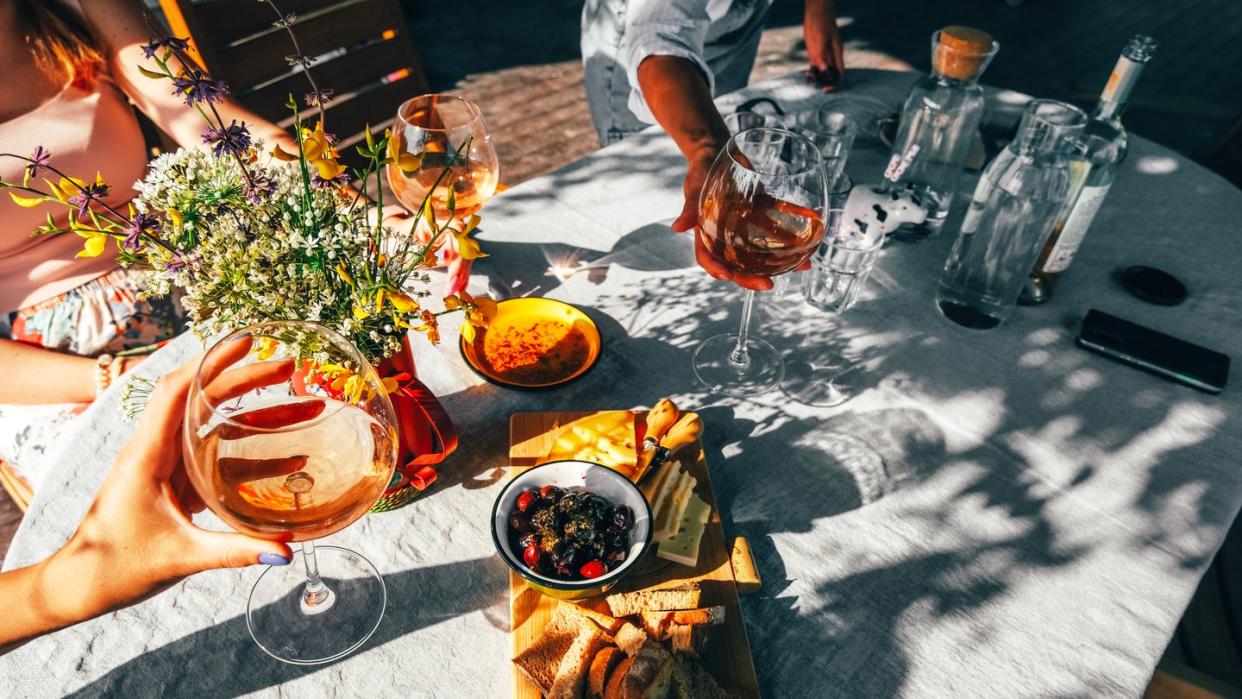
"Hearst Magazines and Yahoo may earn commission or revenue on some items through these links."
Have you ever wondered why some people live to be 100 or older? Dan Buettner did. In the early 2000s, Buettner embarked on a mission to determine what specific aspects of lifestyle and environment might help humans live longer. He teamed up with National Geographic and the National Institute of Aging, assembling a team of anthropologists, epidemiologists and researchers who were able to identify five areas with the highest percentage of centenarians. Known as the Blue Zones, these areas also have low rates of chronic diseases including heart disease, diabetes and cancer.
After Buettner and his team traveled to these regions to study the lifestyle characteristics of these vital super seniors, the Blue Zones eating plan was born.
“The Blue Zone way of eating and living has been linked to lower risks of developing heart disease, type 2 diabetes and some cancers,” explains Laura Iu, RD, CDN, a registered dietitian nutritionist and certified intuitive eating counselor in New York City. “It’s important for people to understand that Blue Zone isn’t a specific diet. It’s actually a concept that highlights various regions, cultures and access to local food. One of the most significant, underrated benefits from the Blue Zone is the emphasis on improved quality of life. This is characterized by cultivating strong social connections, staying active and reducing stress.”
Here's everything you need to know about Blue Zones, including food recommendations and more:
What are the five specific locations of the Blue Zones?
Sardinia, Italy: Sardinia is the second-largest island in the Mediterranean Sea and home to some of the world's longest-living males. The local shepherds walk at least five mountainous miles daily and follow a predominately plant-based diet. Meat is enjoyed on Sundays and special occasions only.
Okinawa, Japan: The world's longest-living women are from Okinawa, a chain of islands in Japan. Their longevity is suggested to be in part due to their close-knit social circles, as well as an old Confucian mantra said before meals that reminds them to avoid overeating and stop when they are 80% full.
Loma Linda, California: The residents of this city in San Bernardino have one of the highest rates of longevity in America. The community of Seven-Day Adventists in Loma Linda follow a primarily vegan diet and also recognize their Sabbath day weekly.
Nicoya, Costa Rica: The Nicoya Peninsula is known for elders with a positive outlook on life. Their diet is abundant in tropical fruits packed with antioxidants, and their water is rich in calcium and magnesium that helps to prevent heart disease and builds strong bones.
Ikaria, Greece: This island in Greece is known for the long-living locals who embrace a Mediterranean diet abundant in olive oil, fruits, vegetables, whole grains, and beans. Ikarians also take time for a mid-afternoon break. They experience half the rate of heart disease and 20% less cancer than Americans do. Additionally, most Ikarians are Greek Orthodox Christians that follow several periods of fasting throughout the year where they essentially follow a vegan diet.
What habits contribute to the Blue Zone lifestyle?
Although the Blue Zones are all over the world, they share quite a few commonalities. “Blue zones are defined by a person's environment and more,” explains Marisa Moore, RDN, author of Plant Love Kitchen and a registered dietitian nutritionist in Atlanta, Georgia. “What people eat is just one factor in that. Gaining access to healthy food, being able to safely pursue activities in their community, and having a healthy work and family and social balance are key.”
After studying the Blue Zone populations, Buettner and his team narrowed down nine evidence-based common denominators among all of the world's centenarians. Known as the "Power 9," these factors are said to be the most influential in promoting longevity in these Blue Zone groups.
Move naturally: Centenarians don't run marathons or frequent the heavy lifting section of the gym. Instead, they are just constantly active throughout the day by tending to their gardens, cooking, doing house work, and walking. Research on Sardinian men specifically found that residing in mountainous areas, walking longer distances to work, and shepherding are linked to their longevity.
Purpose: Blue Zone natives have a keen sense of purpose which motivates them in every day life. Ikigai and plan de vida are phrases from the Okinawans and Nicoyans, respectively, and both translate to, "why I wake up in the morning."
Downshift: Stress is inevitable wherever you live, but centenarians take time each day to de-stress whether it's praying, taking a nap, or enjoying a glass of wine.
Eighty percent rule: The Okinawan phrase hara hachi bu is said before meals to remind Okinawans to stop eating when they are 80% full. This plays a role in weight management as
Plant slant: Fresh produce, especially homegrown, and beans are the cornerstones of most diets of Blue Zone people. On average, meat is only eaten five times per month in the Blue Zone regions.
Wine: Most Blue Zone people, except Adventists, drink 1 to 2 glasses of alcohol per day with friends or at a meal. Sardinian Cannonau wine, made from Grenache grapes, specifically has significantly more healthy flavonoids than other wines. Tea is also sipped daily throughout the Blue Zone regions, but beverages like soft drinks are practically unknown.
Faith: The vast majority of Blue Zone people belong to a faith-based community and attend faith-based services regularly.
Family: Centenarians put family first and are all about keeping the family close. They commit to a life partner and take time to build memories with their children.
Social networks: Friendship and close social circles support healthy behaviors in the Blue Zone regions. Okinawans in particular have created something called moais, which are groups of five friends that are committed to each other for life.
What is the Blue Zone 'diet' and how does it work?
Research suggests that a strong mechanism behind the longevity and reduction of chronic disease in Blue Zone people is the anti-inflammatory benefits of their dietary choices. While these centenarians aren't necessarily completely vegan, their diets do have a predominant focus on plants.
Vegetables, especially homegrown, are a huge emphasis for Blue Zone people and provide a ton of vitamins, minerals, fiber, and antioxidant benefits. Cruciferous veggies like kale and broccoli are nutritionally dense, which is great for longevity.
Beans and lentils are strong plant-based sources of protein in these populations. Similarly to vegetables, legumes also provide a ton of fiber which has benefits ranging from reducing risk of cardiovascular disease to helping control blood sugar levels. In Sardinia, fava beans and garbanzo beans are often eaten multiple times a day, potentially adding to residents’ longevity.
Healthy fats, such as olive oil, are used in several of the Blue Zone regions and provide a slew of heart-healthy fatty acids and antioxidants. Harvard University research found that people consuming just half a teaspoon of olive oil a day had a 19% lower risk of death from any cause over 28-years.
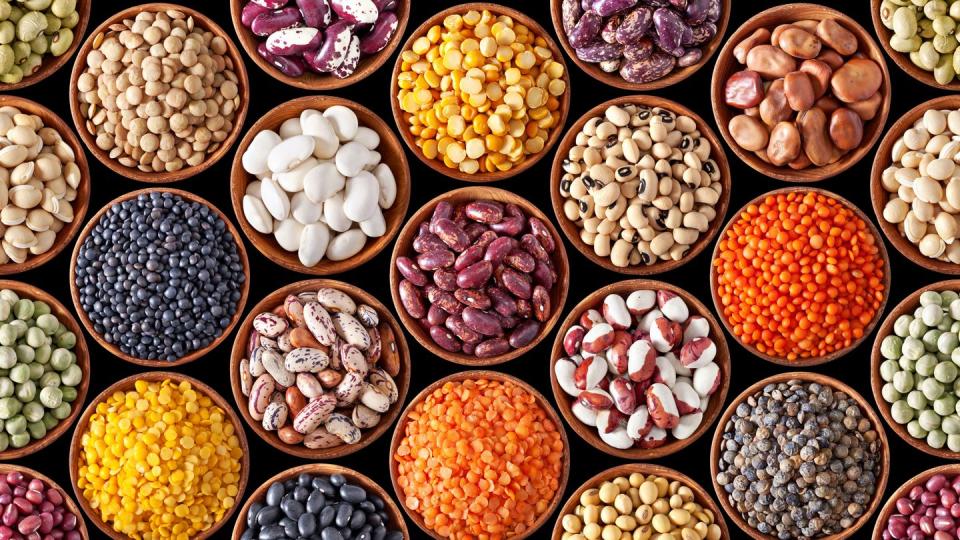
Blue Zone diet food list:
Based on the "Power 9" principle of plant slant that the Blue Zone regions embrace, we've put together a food list that can help you get started on eating the Blue Zone way.
Produce
Fruit: apples, bananas, berries, grapes, oranges, papaya, pineapple, plums, watermelon, etc
Vegetables: bell peppers, beets, broccoli, carrots, cauliflower, chard, collard greens, cucumber, garlic, green beans, kale, onions, potatoes, spinach, tomatoes, etc.
Protein
Beans & legumes: black beans, chickpeas, kidney beans, lentils, etc.
Eggs (up to two to four times per week)
Fish (up to three small servings a week): anchovies, salmon, cod, swordfish, tuna, sardines, etc.
Goat milk and goat-based dairy products
Nuts: almonds, Brazil nuts, cashews, peanuts, walnuts, etc.
Seeds: pumpkin seeds, chia seeds, flax seeds, hemp seeds, etc.
Tofu, extra-firm
Grains & Pantry Staples
Barley
Brown Rice
Coffee
Dried spices and fresh herbs
Oatmeal, preferably steel-cut
Olive oil
Quinoa
Red wine
Tea
100% Whole wheat, sprouted grain bread, and sourdough bread
What foods should you avoid?
Blue Zone people limit their consumption of red meat, and even only enjoy small portions of fish about three times per week. These populations do still indulge in moderation regarding sweets and other foods, but they eat sensibly and don't overindulge. By maintaining moderation and balance with food choices, especially following rules such as the Okinawans do with the hara hachi bu principle, weight stays controlled and obesity is not as prevalent to fuel chronic disease.
Four types of foods to avoid or enjoy in moderation:
Sugary beverages, which are empty calories and associated with development of chronic disease
Salty snacks, which often contain excessive amounts of sodium and preservatives
Processed foods like pre-packaged cookies and candy
Processed meat, which can contribute to heart disease and cancer
Who should not try the lifestyle?
“I would caution anyone with a medical condition or food allergies/intolerances to always consult with their doctor before following a new diet," says Iu. “People with a history of disordered eating may also want to skip a structured diet such as Blue Zones — stressing over how to adhere to the principles is counterintuitive, because the Blue Zones style of eating is meant to emphasize the importance of mental and emotional well-being.”
There’s also been some research that is critical of certain parts of the Blue Zones plan, including the idea that it may not be financially affordable for everyone to follow due to the emphasis on fresh whole foods that can sometimes be pricier than convenience foods, and not everyone may have the same access to these types of foods depending on where they live.
Blue Zone books and recipes:
If you're looking to adopt some of the Blue Zone diet and lifestyle habits, these resources can help get you started.
The Blue Zones

The Blue Zones
amazon.com
$7.99
The Blue Zones Solution

The Blue Zones Solution
amazon.com
$9.69
Good Housekeeping Mediterranean Diet
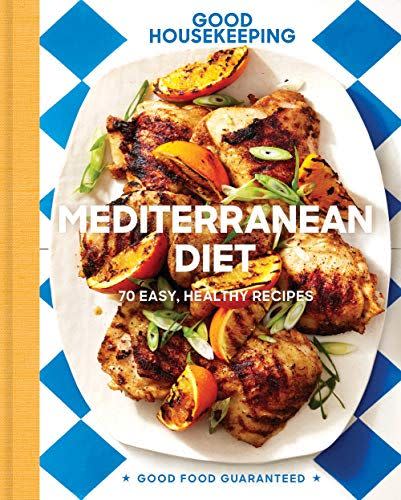
Good Housekeeping Mediterranean Diet
amazon.com
29.99
The Blue Zones Kitchen
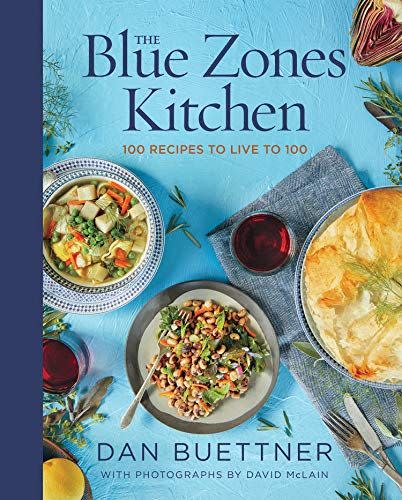
The Blue Zones Kitchen
amazon.com
$13.95
The Blue Zones
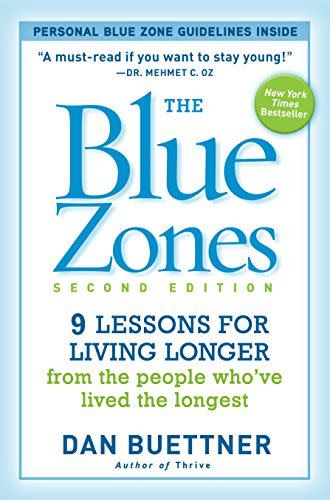
The Blue Zones
amazon.com
$13.49
Ikaria

Ikaria
amazon.com
$30.24
The Complete Mediterranean Cookbook
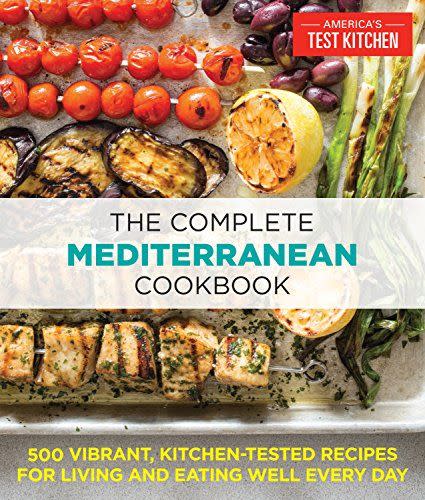
The Complete Mediterranean Cookbook
amazon.com
$19.00
The Blue Zones of Happiness
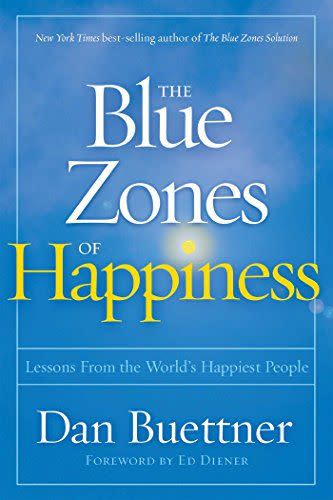
The Blue Zones of Happiness
amazon.com
$13.49
You Might Also Like
